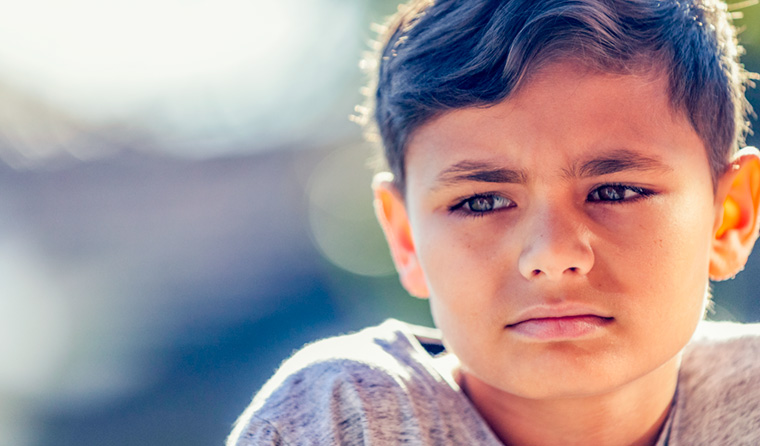Opinion
What price do we pay to avoid children being noisy?
Preventing childhood trauma starts with letting children know they can be heard – even if that means being noisy, Dr Gillian Riley writes.
 Dr Gillian Riley believes it is a mistake to raise children who ‘have been taught that they cannot talk, that their voices are not permitted’.
Dr Gillian Riley believes it is a mistake to raise children who ‘have been taught that they cannot talk, that their voices are not permitted’.
My son is delighted with the sound of his voice. He’s sitting in his pram, chortling to himself, bouncing up and down and emitting noises that sound like the shrieks of a pterodactyl.
This is, I am informed between high-pitched squeals, because he is no longer my son, he has in fact become a pterodactyl. He’s smiling.
The woman who serves us at the counter of the hardware store, however, is not.
‘Uh,’ she sighs as my son emits another squeal. ‘He sounds just like my grandchildren. Children these days are so much noisier than they should be.’
The notion that children should be seen and not heard has its origins in a 15th century critique of the behavior of young women. (A mayde schuld be seen, but not herd)
It implies a certain set of behavioral standards, particularly in public and in the company of adults.
So who should keep children from being heard?
Well, the onus falls onto their parents and, in particular, their mother.
Children, by definition, are learning all the time. They learn by playing and interacting with their environment. Sometimes this is noisy. Sometimes it is boisterous. Sometimes it is destructive. And sometimes it is certainly going to plague the ears of the adults that surround them.
Let’s not forget that in the not too distant past, children also worked in extreme and dangerous conditions. Down coal mines, in factories and down chimneys.
The Royal Society for the Prevention of Cruelty to Animals was founded in 1824, 67 years before the Society for Prevention of Cruelty to Children.
So reaching back to the past for social norms is not exactly inspirational.
The question I always have when confronted with these situations is, what price are we willing to pay, on a societal level, just to avoid a bit of noise?
The rates of childhood abuse and neglect in Australia are horrifying. Sixty thousand substantiated cases in 2015–16 – and these are the reported, investigated and substantiated cases. The actual rates will of course be far higher. Child protection officials state ‘we don’t have a system to meet demand’.
We know who picks up that slack when child protection cannot. We do. General practice does.
The legacy of childhood trauma is significantly linked with a multitude of physical health problems, with mental illness, suicide, drug and alcohol abuse, aggression, violence and criminal behavior, relationship difficulties, and homelessness.
Preventing childhood trauma is important not only because harming innocent children is horrifying, but because it also makes sense economically and societally.
It seems sad to need to say this, but this approach starts with letting children know that they can be heard.
It starts in realising that voices raised in joy are not damaging. That mothers and parents with loud and boisterous children are not failing in their parenting.
I would argue that there are few failures in parenting.
But one definite failure would be rearing children who have been taught that they cannot talk, that their voices are not permitted. It is not a failure to have children who are interacting happily with their parents.
It starts, as well, in our consultation rooms. We are family doctors. Tolerating the noise of children should come with the territory.
That should go without saying, but it’s not always the case.
The real lessons we teach our children often occur outside classrooms and are far more than just their ABCs.
If we teach our children to be seen and not heard, we teach our children that they cannot tell us when bad things happen to them. And we all know what lies down that path.
So what did I do? I smiled at the woman at the checkout and told her that I worked a lot in mental health. And I was really glad that children were being noisier these days.
I then smiled down at the radiant face of my pterodactyl and I took him home.
behaviour childhood parenting trauma
newsGP weekly poll
Which of the following areas are you more likely to discuss during a routine consultation?